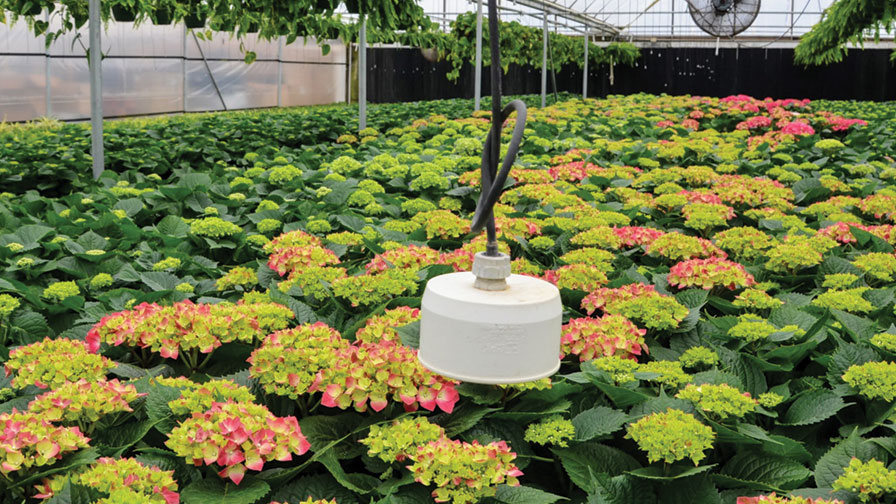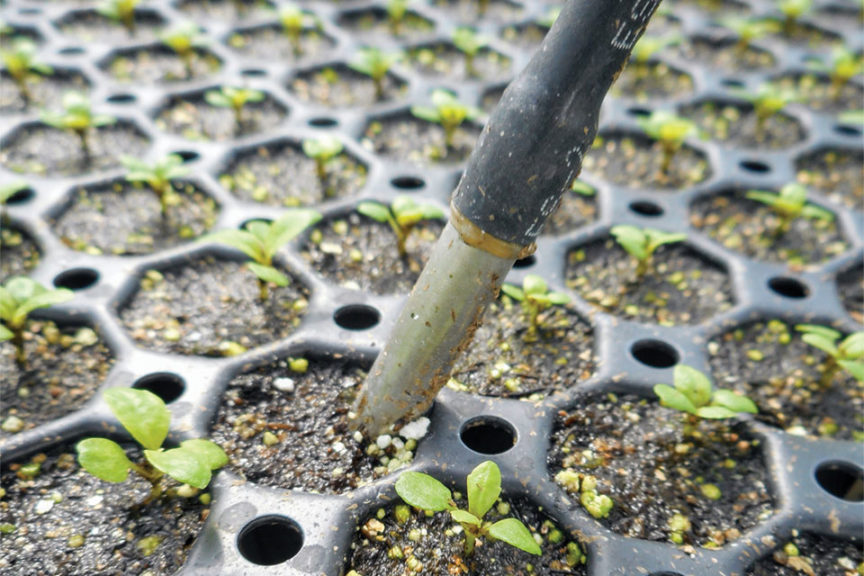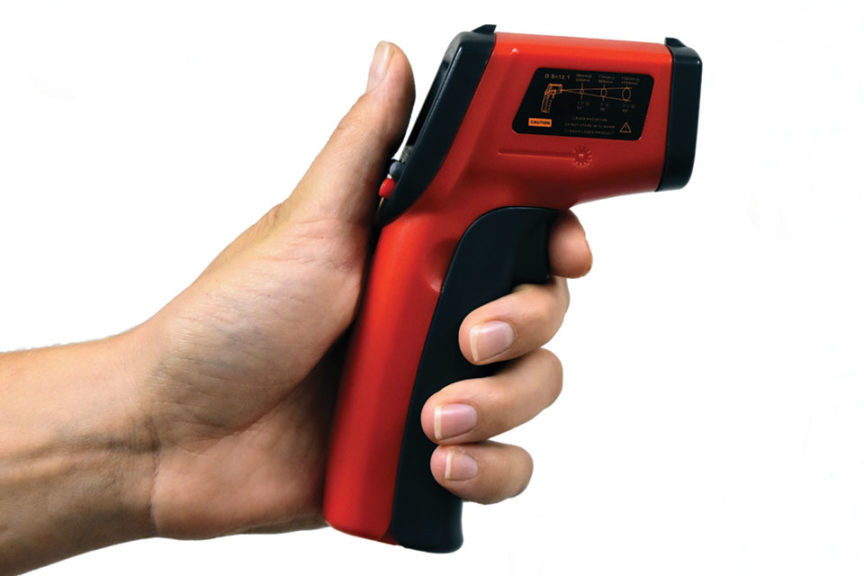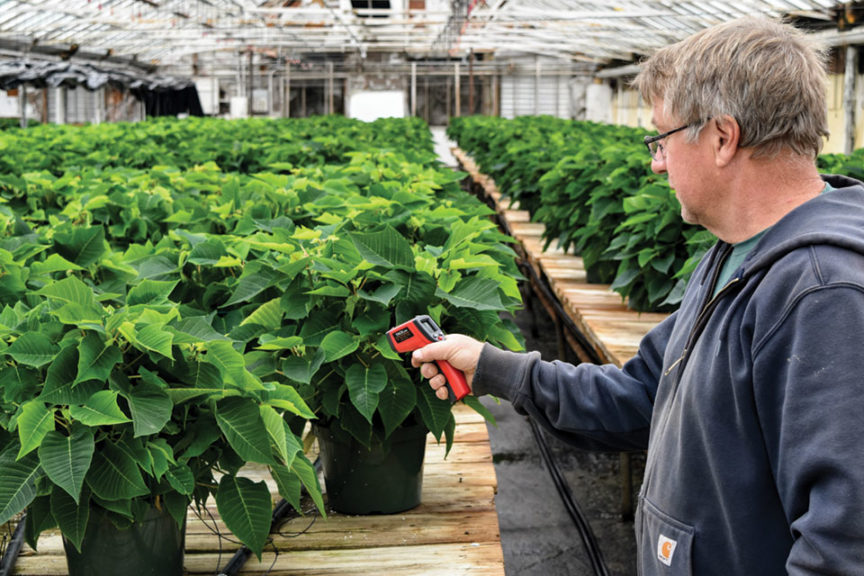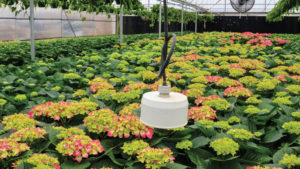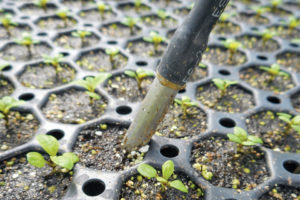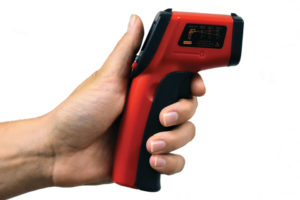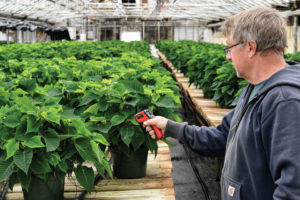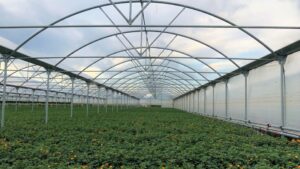Infrared Thermometers for Monitoring Plant and Substrate Temperatures
When you think of a greenhouse grower’s toolkit, what do you imagine? Do you think of instruments, data loggers, or meters to measure and monitor air, substrate, and plant temperatures, as well as light intensity, carbon dioxide (CO2), substrate pH, and electrical conductivity (EC)? If the answer is yes, you’re on the right track. If not, this five-part article series will explain the importance of establishing a greenhouse grower toolkit with instruments that will assist you in measuring and monitoring the greenhouse environment, maintaining crop health, and making informed decisions based on data. In this first article, we will discuss the importance of having a hand-held infrared (IR) thermometer in your toolkit.
Temperature
Temperature is defined as thermal energy and influences seed germination, rooting of cuttings and seedlings, leaf expansion and flowering, plant architecture and quality, and cropping time. The thermal energy exchange (temperature) between plants and the greenhouse environment is the primary driver of plant development. Thermal energy exchange includes convection (air temperature), conduction (substrate temperature), absorption of radiation (light intensity), and evaporative cooling (transpiration). Therefore, the greenhouse environment influences plant development because environmental conditions influence plant temperature at the shoot- or root-tip.
Greenhouse air temperature has the greatest effect on leaf expansion and flowering because of the heat-exchange between the ambient greenhouse air and shoot-tip via convection. Substrate temperature promotes rooting of plugs and liners because of the heat exchange between the substrate and root-tip via conduction. Therefore, the temperature at the growing point influences cell division, and thus, the rate of plant development.
What does this all mean? Plant temperature affects how fast or slow a crop will be ready for market. Proper heating and ventilation, providing root-zone heating during young plant production, and modulating light intensity by shading will assist with managing air and substrate temperatures, and thus, plant temperature. To manage these temperatures, growers often use air (Figure 1, see slideshow) and root-zone temperature (Figure 2, see slideshow) sensors or thermistors connected to an environmental control computer. In most cases, but not all, environmental control computers do not take into account plant temperature.
Systems that do measure plant temperature consist of fine-wire thermistors injected into the apical meristem of plants. These thermistors may break if growers don’t take care when crop respacing occurs or if the crop is ready to be shipped. Growers may also use IR sensors connected to data loggers. Alternatively, they can use a hand-held IR thermometer to measure plant surface temperature.
Hand-held IR Thermometers
Hand-held IR thermometers (Figure 3, see slideshow) can be used to not only determine instantaneous or real-time plant surface temperature, but also temperature of root zone or floor heating systems, heat exchangers, and other greenhouse equipment that may have hot surfaces. When selecting a device to measure surface temperature, one could consider thermal imaging cameras, though hand-held IR thermometers are oftentimes more budget friendly.
Selecting an IR Thermometer
When selecting an IR thermometer, consider the following:
• Ease of use
• Price
• Temperature range
• Field-of-view
• Target dimensions
• Calibration
Ease of use and price are likely the two most common considerations when selecting an IR thermometer. In general, IR thermometers are similar to a point-and-shoot camera. A typical IR thermometer that is easy to use can range from $10 to upward of $1,300. One can purchase an IR thermometer from a big box hardware store or online and select from models with a laser pointer for guidance or even a built-in thermal imaging camera. It’s up to you to decide which device will work best for you and your budget.
Another important factor when selecting an IR thermometer is temperature range. In most cases, the temperature range will be indicated on the package or website, surface of the IR thermometer, and in the user’s manual. It is important to select an IR thermometer that will measure within the appropriate temperature range because some IR thermometers are available for low-temperature applications (<32ºF) to high-temperature applications (>5,000ºF). Generally, the narrower the temperature range, the better the temperature measurement. Additionally, some devices have both Fahrenheit and Celsius output measurements.
Field-of-view and target dimensions are two other factors to consider when selecting an IR thermometer. Most hand-held IR thermometers will be equipped with a laser for guidance. To take an accurate measurement, it is important to make sure the target is larger than the laser’s spot size (Figure 4, see slideshow). As the distance from the target surface increases, the spot size of the area that one desires to measure becomes larger. This means that to measure smaller leaves of plugs and liners you need to be closer, while larger leaves allow you to measure from a distance.
When accuracy is critical, make sure the target is at least two times the size of the laser’s spot. Finally, one should select a device that has the ability to calibrate before and between measurements. This allows for accurate measurements every time the device is used.
How to Use an IR Thermometer
Hand-held IR thermometers are easy-to-use. Before taking a measurement, calibrate the device following directions provided in the user’s manual. Once the IR thermometer is calibrated and the appropriate leaf size or surface is determined in relation to distance, growers can begin to take measurements. For accuracy, measure only dry surfaces. Following the user’s manual, to take a measurement, simply press the trigger of the device to receive a temperature reading (Figure 4, see slideshow). Temperature readings occur instantly or within seconds and provide an instantaneous real-time temperature (emissivity) measurement. Some hand-held IR thermometers will beep when a measurement or calibration has been made. Growers should not rely on one measurement, but should take multiple measurements to determine an average surface temperature. Also, measurements throughout the day are recommended.
A Tool for Growers
An IR thermometer is a great instrument to add to any greenhouse grower toolkit. The ability to quickly and accurately measure real-time instantaneous plant surface temperatures in combination with air and substrate temperatures allows growers to make informed decisions regarding temperature monitoring and management. By adding this hand-held device to your toolkit and plant temperature data to your crop notes, you will have a better understanding of your greenhouse environment and most importantly meet your market dates.








